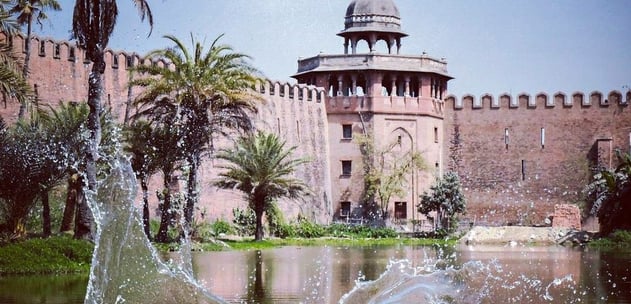Darbhanga Raj: A Center of Wealth and Culture
Historical Overview.


Darbhanga Raj was established in the 16th century and grew to become one of the most prominent estates in Bihar by the British colonial era. The estate, sprawling across several districts, was known for its vast agricultural lands, rich cultural heritage, and philanthropic activities. Maharaja Lakshmeshwar Singh, who ruled during the late 19th century, is often regarded as the most influential figure in Darbhanga’s history. He skillfully balanced loyalty to the British Crown while advocating for the welfare of his subjects.
Establishment of Institutions:
Maharaja Lakshmeshwar Singh and his successors established schools, colleges, and libraries. For instance, the Darbhanga Medical College was one of the premier institutions in the region, attracting students from across the country.Support for Women's Education:
The rulers were early advocates for women's education in the conservative Maithil society. They funded initiatives to educate girls and provided scholarships for their studies.
Contributions to Education
During the British colonial era, the princely estates of Bihar, including Darbhanga Raj, Bettiah Raj, Tikari Raj, Hathwa Raj, and Banaili Raj, played a pivotal role in shaping the region's socio-economic and cultural landscape. These estates, governed by powerful zamindars, were not only centers of administrative power but also hubs of cultural patronage and philanthropy. Darbhanga Raj, the wealthiest and most influential, became a beacon of Maithili culture, fostering Sanskrit literature, classical music, and higher education through initiatives like Darbhanga Medical College and the Rajnagar Palace. Bettiah Raj, rooted in Western Bihar, was instrumental in the Revolt of 1857, showcasing initial resistance before strategically collaborating with the British to maintain its influence. Tikari Raj gained recognition for its forward-thinking policies, focusing on infrastructure development, education for marginalized communities, and women’s empowerment, while Hathwa Raj prioritized agricultural innovations and irrigation, uplifting local farmers and rural economies. Banaili Raj, smaller yet culturally vibrant, significantly supported Maithili art, traditional music, and temple construction, preserving Bihar’s rich heritage. Despite their collaboration with the British, which helped secure their privileges, these estates also acted as mediators between colonial rulers and local populations. After independence, the abolition of the zamindari system dismantled their power, leading to the redistribution of their vast lands and resources. However, their contributions to Bihar’s intellectual growth, cultural renaissance, and rural development remain enduring markers of their historical significance.
Darbhangaproperty.com provided exceptional service, guiding me through every step of the process. Their professionalism and attention to detail made my experience truly outstanding.
Rishi Mishra

★★★★★
